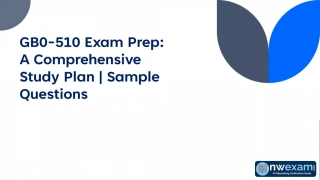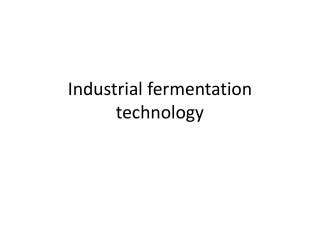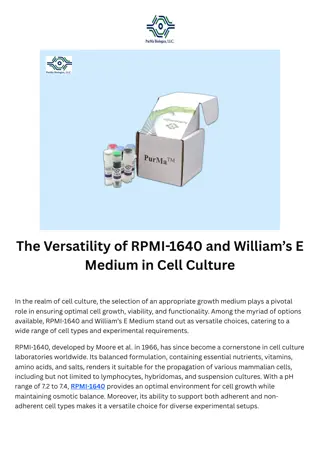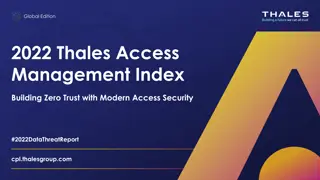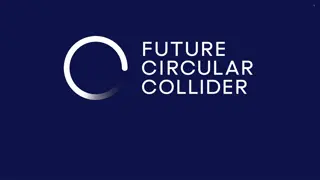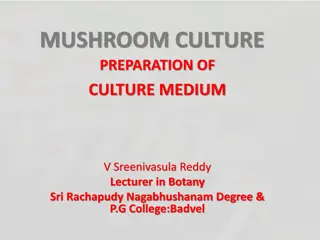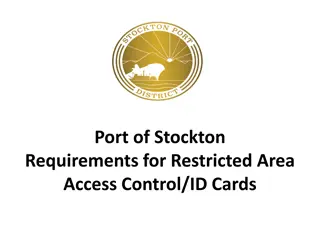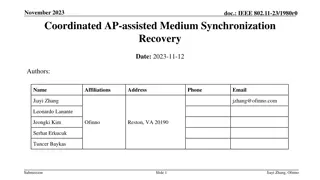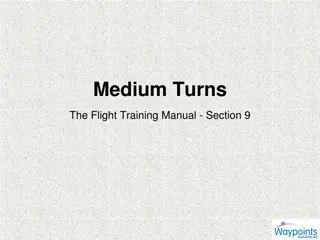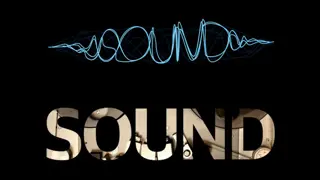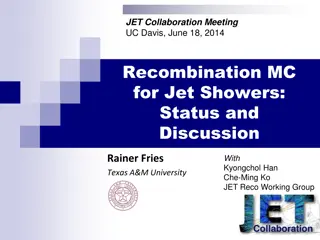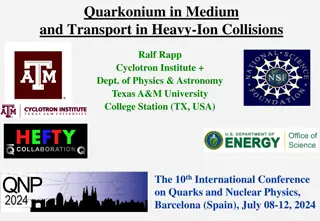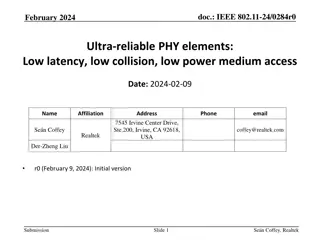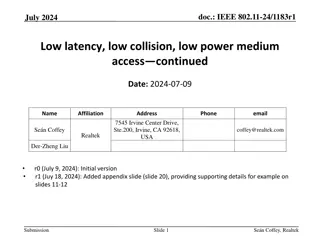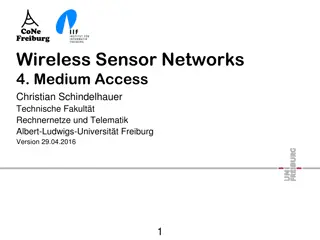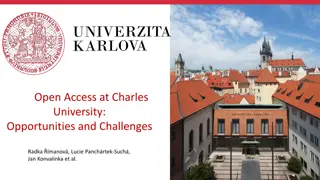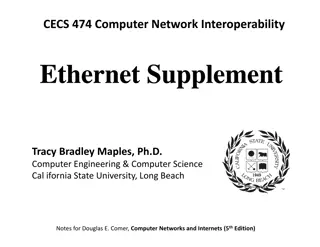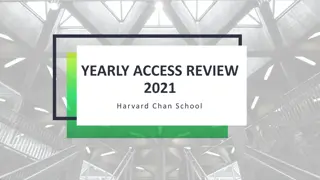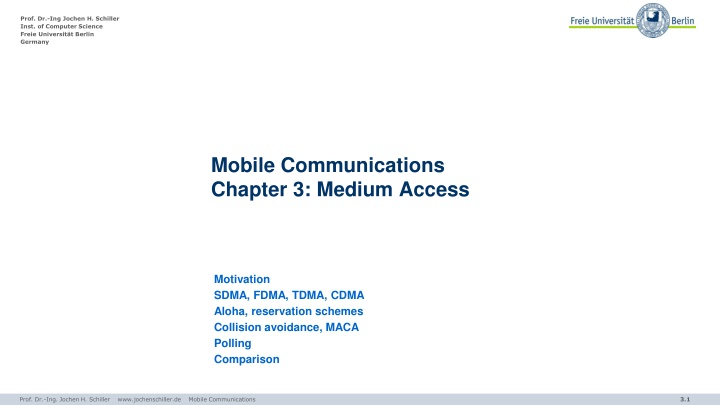
Mobile Communications: Medium Access Methods and Challenges
Explore the challenges and solutions in mobile communications, including issues with applying fixed network access methods, hidden and exposed terminals, and problems with near and far terminals.
Download Presentation

Please find below an Image/Link to download the presentation.
The content on the website is provided AS IS for your information and personal use only. It may not be sold, licensed, or shared on other websites without obtaining consent from the author. If you encounter any issues during the download, it is possible that the publisher has removed the file from their server.
You are allowed to download the files provided on this website for personal or commercial use, subject to the condition that they are used lawfully. All files are the property of their respective owners.
The content on the website is provided AS IS for your information and personal use only. It may not be sold, licensed, or shared on other websites without obtaining consent from the author.
E N D
Presentation Transcript
Prof. Dr.-Ing Jochen H. Schiller Inst. of Computer Science Freie Universit t Berlin Germany Mobile Communications Chapter 3: Medium Access Motivation SDMA, FDMA, TDMA, CDMA Aloha, reservation schemes Collision avoidance, MACA Polling Comparison Prof. Dr.-Ing. Jochen H. Schiller www.jochenschiller.de Mobile Communications 3.1
Motivation Can we apply media access methods from fixed networks? Example CSMA/CD -Carrier Sense Multiple Access with Collision Detection -send as soon as the medium is free, listen into the medium if a collision occurs (legacy method in IEEE 802.3) Problems in wireless networks -signal strength decreases proportional to (at least) the square of the distance -the sender would apply CS and CD, but the collisions happen at the receiver -it might be the case that a sender cannot hear the collision, i.e., CD does not work -furthermore, CS might not work if, e.g., a terminal is hidden Prof. Dr.-Ing. Jochen H. Schiller www.jochenschiller.de Mobile Communications 3.2
Problem of CSMA/CD in wireless communication signal strength collision threshold noise sender A sender C receiver B signal ok signal ok Prof. Dr.-Ing. Jochen H. Schiller www.jochenschiller.de Mobile Communications 3.3
Motivation - hidden and exposed terminals Hidden terminals -A sends to B, C cannot receive A -C wants to send to B, C senses a free medium (CS fails) -collision at B, A cannot receive the collision (CD fails) -A is hidden for C A B C Exposed terminals -B sends to A, C wants to send to another terminal (not A or B) -C has to wait, CS signals a medium in use -but A is outside the radio range of C, therefore waiting is not necessary -C is exposed to B Prof. Dr.-Ing. Jochen H. Schiller www.jochenschiller.de Mobile Communications 3.4
Motivation - near and far terminals Terminals A and B send, C receives -signal strength decreases proportional to the square of the distance -the signal of terminal B therefore drowns out A s signal -C cannot receive A A B C If C for example was an arbiter for sending rights, terminal B would drown out terminal A already on the physical layer Also severe problem for CDMA-networks - precise power control needed! Prof. Dr.-Ing. Jochen H. Schiller www.jochenschiller.de Mobile Communications 3.5
Access methods SDMA/FDMA/TDMA SDMA (Space Division Multiple Access) -segment space into sectors, use directed antennas -cell structure FDMA (Frequency Division Multiple Access) -assign a certain frequency to a transmission channel between a sender and a receiver -permanent (e.g., radio broadcast), slow hopping (e.g., GSM), fast hopping (FHSS, Frequency Hopping Spread Spectrum) TDMA (Time Division Multiple Access) -assign the fixed sending frequency to a transmission channel between a sender and a receiver for a certain amount of time PDMA (Polarization Division Multiple Access) -assign a certain polarization to a transmission channel using, e.g. specialized antennas The multiplexing schemes presented in chapter 2 are now used to control medium access! -multiplexing scheme plus algorithm Multiple Access method Prof. Dr.-Ing. Jochen H. Schiller www.jochenschiller.de Mobile Communications 3.6
FDD/FDMA - general scheme, example GSM FDM used twice -FDD (Frequency Division Duplex) -separation of the direction (uplink/downlink) using different frequencies -FDMA -separation of different channels using different frequencies f 960 MHz 124 200 kHz 1 935.2 MHz 20 MHz 915 MHz 124 1 890.2 MHz t Prof. Dr.-Ing. Jochen H. Schiller www.jochenschiller.de Mobile Communications 3.7
OFDMA Orthogonal frequency-division multiple access Use OFDM for multiple access, i.e. assign sub-carriers to individual users for a certain time -can be seen as combination of FDM and TDM -OFDM uses FDM with orthogonal carriers, i.e. multiple closely spaced subcarrier signals with overlapping spectra are transmitted to carry data in parallel (See e.g. DVB, DAB+, DSL, IEEE 802.11a, ) -used in e.g. IEEE 802.11ax, LTE, 5G New Radio subcarrier spacing pilot Advantages -high flexibility (data rates, frequencies, QoS) -can fill white spaces (see CR) -good robustness wrt. fading and interference -shorter/constant delay Disadvantages -more complex electronics with FFT, FEC -frequency-selective fading if few subcarriers used -co-channel interference from neighboring cells -26 -21 -7 -1 1 7 21 26 subcarrier number channel center frequency Prof. Dr.-Ing. Jochen H. Schiller www.jochenschiller.de Mobile Communications 3.8
TDD/TDMA - general scheme, example DECT TDM used twice -TDD (Frequency Division Duplex) -separation of the direction (uplink/downlink) using different time periods -TDMA -separation of different channels using different time-slots 417 s 1 2 3 11 12 1 2 3 11 12 Please note! -other combinations can also make sense -TDD, TDMA, FDM: WLANs following 802.11 offering several channels, up- and downlink on same channel, users separated in time -FDD, TDMA: GSM when looking at users on a certain channel, up- and downlink separated in frequency, users separated in time - t downlink uplink Prof. Dr.-Ing. Jochen H. Schiller www.jochenschiller.de Mobile Communications 3.9
Questions & Tasks -What is the main physical reason for the failure of many MAC schemes known from wired networks? What is done in wired networks to avoid this effect? -What is the basic prerequisite for applying FDMA? How does this factor increase complexity compared to TDMA systems? -Who is responsible for MAC if we consider the whole frequency spectrum as presented in chapter 1? -Considering duplex channels, what are alternatives for implementation in wireless networks? What about typical wired networks? -Assume all stations can hear all other stations. One station wants to transmit and senses the carrier idle. Why can a collision still occur after the start of transmission? Prof. Dr.-Ing. Jochen H. Schiller www.jochenschiller.de Mobile Communications 3.10
Aloha/slotted aloha Mechanism -random, distributed (no central arbiter), time-multiplex -Slotted Aloha additionally uses time-slots, sending must always start at slot boundaries Aloha collision sender A sender B sender C t Slotted Aloha collision sender A sender B sender C t Prof. Dr.-Ing. Jochen H. Schiller www.jochenschiller.de Mobile Communications 3.11
DAMA - Demand Assigned Multiple Access Channel efficiency only 18% for Aloha, 36% for Slotted Aloha -assuming Poisson distribution for packet arrival and packet length Reservation can increase efficiency to 80% -a sender reserves a future time-slot -sending within this reserved time-slot is possible without collision -reservation also causes higher delays -typical scheme for satellite links Examples for reservation algorithms: -Explicit Reservation according to Roberts (Reservation-ALOHA) -Implicit Reservation (PRMA) -Reservation-TDMA Prof. Dr.-Ing. Jochen H. Schiller www.jochenschiller.de Mobile Communications 3.12
Access method DAMA: Explicit Reservation Explicit Reservation (Reservation Aloha): -two modes: -ALOHA mode for reservation: competition for small reservation slots, collisions possible -reserved mode for data transmission within successful reserved slots (no collisions possible) -it is important for all stations to keep the reservation list consistent at any point in time and, therefore, all stations have to synchronize from time to time collision t Aloha reserved Aloha reserved Aloha reserved Aloha Prof. Dr.-Ing. Jochen H. Schiller www.jochenschiller.de Mobile Communications 3.13
Access method DAMA: PRMA Implicit reservation (PRMA - Packet Reservation MA): -a certain number of slots form a frame, frames are repeated -stations compete for empty slots according to the slotted aloha principle -once a station reserves a slot successfully, this slot is automatically assigned to this station in all following frames as long as the station has data to send -competition for this slots starts again as soon as the slot was empty in the last frame reservation 1 2 3 4 5 6 7 8 time-slot ACDABA-F A C D A B A F frame1 ACDABA-F A C A B A frame2 AC-ABAF- collision at reservation attempts A B A F frame3 A---BAFD A B A F D frame4 ACEEBAFD A C E E B A F D frame5 t Prof. Dr.-Ing. Jochen H. Schiller www.jochenschiller.de Mobile Communications 3.14
Access method DAMA: Reservation-TDMA Reservation Time Division Multiple Access -every frame consists of N mini-slots and x data-slots -every station has its own mini-slot and can reserve up to k data-slots using this mini-slot (i.e. x = N * k). -other stations can send data in unused data-slots according to a round-robin sending scheme (best-effort traffic) e.g. N=6, k=2 N * k data-slots N mini-slots reservations for data-slots other stations can use free data-slots based on a round-robin scheme Prof. Dr.-Ing. Jochen H. Schiller www.jochenschiller.de Mobile Communications 3.15
MACA - collision avoidance MACA (Multiple Access with Collision Avoidance) uses short signaling packets for collision avoidance -RTS (request to send): a sender request the right to send from a receiver with a short RTS packet before it sends a data packet -CTS (clear to send): the receiver grants the right to send as soon as it is ready to receive Signaling packets contain -sender address -receiver address -packet size Variants of this method can be found in IEEE802.11 as DFWMAC (Distributed Foundation Wireless MAC) Prof. Dr.-Ing. Jochen H. Schiller www.jochenschiller.de Mobile Communications 3.16
MACA examples MACA avoids the problem of hidden terminals -A and C want to send to B -A sends RTS first -C waits after receiving CTS from B RTS CTS CTS A B C MACA avoids the problem of exposed terminals -B wants to send to A, C to another terminal -now C does not have to wait for it, cannot receive CTS from A RTS RTS CTS A B C Prof. Dr.-Ing. Jochen H. Schiller www.jochenschiller.de Mobile Communications 3.17
Polling mechanisms If one terminal can be heard by all others, this central terminal (a.k.a. base station) can poll all other terminals according to a certain scheme -now all schemes known from fixed networks can be used (typical mainframe - terminal scenario) Example: Randomly Addressed Polling -base station signals readiness to all mobile terminals -terminals ready to send can now transmit a random number without collision with the help of CDMA or FDMA (the random number can be seen as dynamic address) -the base station now chooses one address for polling from the list of all random numbers (collision if two terminals choose the same address) -the base station acknowledges correct packets and continues polling the next terminal -this cycle starts again after polling all terminals of the list Prof. Dr.-Ing. Jochen H. Schiller www.jochenschiller.de Mobile Communications 3.18
ISMA (Inhibit Sense Multiple Access) Current state of the medium is signaled via a busy tone -the base station signals on the downlink (base station to terminals) if the medium is free or not -terminals must not send if the medium is busy -terminals can access the medium as soon as the busy tone stops -the base station signals collisions and successful transmissions via the busy tone and acknowledgements, respectively (media access is not coordinated within this approach) -classical mechanism used, e.g., for CDPD (USA, integrated into AMPS) Prof. Dr.-Ing. Jochen H. Schiller www.jochenschiller.de Mobile Communications 3.19
Questions & Tasks -Recall the problem of hidden and exposed terminals. What happens in the case of such terminals if Aloha, slotted Aloha, reservation Aloha, or MACA is used? -What are the advantages of a fixed TDM pattern compared to random, demand driven TDM? Compare the efficiency in the case of several connections with fixed data rates or in the case of varying data rates. Now explain why traditional mobile phone systems use fixed patterns, while computer networks generally use random patterns. The major part of data being transmitted is computer-generated data. How has this fact changed mobile phone systems? -What are benefits of reservation schemes? How are collisions avoided during data transmission, why is the probability of collisions lower compared to classical Aloha? What are disadvantages of reservation schemes? -How can MACA still fail in case of hidden/exposed terminals? Think of mobile stations and changing transmission characteristics. Prof. Dr.-Ing. Jochen H. Schiller www.jochenschiller.de Mobile Communications 3.20
Access method CDMA CDMA (Code Division Multiple Access) -all terminals send on the same frequency probably at the same time and can use the whole bandwidth of the transmission channel -each sender has a unique random number, the sender XORs the signal with this random number -the receiver can tune into this signal if it knows the pseudo random number, tuning is done via a correlation function Disadvantages: -higher complexity of a receiver (receiver cannot just listen into the medium and start receiving if there is a signal) -all signals should have the same strength at a receiver Advantages: -all terminals can use the same frequency, no planning needed -huge code space (e.g. 232) compared to frequency space -interferences (e.g. white noise) is not coded -forward error correction and encryption can be easily integrated Prof. Dr.-Ing. Jochen H. Schiller www.jochenschiller.de Mobile Communications 3.21
CDMA in theory (very simplified) Sender A -sends Ad= 1, key Ak= 010011 (assign: 0 = -1, 1 = +1) -sending signal As= Ad* Ak= (-1, +1, -1, -1, +1, +1) Sender B -sends Bd= 0, key Bk= 110101 (assign: 0 = -1, 1 = +1) -sending signal Bs= Bd* Bk= (-1, -1, +1, -1, +1, -1) Both signals superimpose in space -interference neglected (noise etc.) -As+ Bs= (-2, 0, 0, -2, +2, 0) Receiver wants to receive signal from sender A -apply key Akbitwise (inner product) -Ae= (-2, 0, 0, -2, +2, 0) Ak= 2 + 0 + 0 + 2 + 2 + 0 = 6 -result greater than 0, therefore, original bit was 1 -receiving B -Be= (-2, 0, 0, -2, +2, 0) Bk= -2 + 0 + 0 - 2 - 2 + 0 = -6, i.e. 0 Prof. Dr.-Ing. Jochen H. Schiller www.jochenschiller.de Mobile Communications 3.22
CDMA on signal level I (still pretty simplified) data A Ad 1 0 1 key A key Ak 0 1 1 0 0 1 1 0 0 1 0 1 1 1 0 0 0 0 0 0 1 1 0 0 1 0 1 0 0 1 0 1 1 0 1 0 sequence A data key As signal A Real systems use much longer keys resulting in a larger distance between single code words in code space. Prof. Dr.-Ing. Jochen H. Schiller www.jochenschiller.de Mobile Communications 3.23
CDMA on signal level II As signal A Bd data B 1 0 0 key B key 0 1 0 1 0 1 1 0 1 0 0 1 1 1 0 0 1 1 0 0 0 0 0 0 0 0 1 1 0 0 1 1 1 1 1 1 Bk sequence B data key Bs signal B As + Bs Prof. Dr.-Ing. Jochen H. Schiller www.jochenschiller.de Mobile Communications 3.24
CDMA on signal level III data A Ad 1 0 1 As + Bs Ak (As + Bs) * Ak integrator output comparator output 0 1 1 Prof. Dr.-Ing. Jochen H. Schiller www.jochenschiller.de Mobile Communications 3.25
CDMA on signal level IV data B Bd 1 0 0 As + Bs Bk (As + Bs) * Bk integrator output comparator output 0 0 1 Prof. Dr.-Ing. Jochen H. Schiller www.jochenschiller.de Mobile Communications 3.26
CDMA on signal level V As + Bs wrong key K (As + Bs) * K integrator output comparator output (0) (0) ? Prof. Dr.-Ing. Jochen H. Schiller www.jochenschiller.de Mobile Communications 3.27
SAMA - Spread Aloha Multiple Access Aloha has only a very low efficiency, CDMA needs complex receivers to be able to receive different senders with individual codes at the same time Idea: use spread spectrum with only one single code (chipping sequence) for spreading for all senders accessing according to aloha collision 1 0 1 sender A sender B narrow band 0 1 1 send for a shorter period with higher power spread the signal e.g. using the chipping sequence 110101 ( CDMA without CD ) t Problem: find a chipping sequence with good characteristics Prof. Dr.-Ing. Jochen H. Schiller www.jochenschiller.de Mobile Communications 3.28
Comparison SDMA/TDMA/FDMA/CDMA Approach Idea SDMA TDMA FDMA CDMA segment space into cells/sectors segment sending time into disjoint time-slots, demand driven or fixed patterns all terminals are active for short periods of time on the same frequency segment the frequency band into disjoint sub- bands spread the spectrum using orthogonal codes Terminals only one terminal can be active in one cell/one sector every terminal has its own frequency, uninterrupted all terminals can be active at the same place at the same moment, uninterrupted code plus special receivers Signal separation cell structure, directed antennas synchronization in the time domain filtering in the frequency domain Advantages very simple, increases capacity per km established, fully digital, flexible simple, established, robust flexible, less frequency planning needed, soft handover complex receivers, needs more complicated power control for senders higher complexity, lowered expectations; integrated with TDMA/FDMA Disadvantages inflexible, antennas typically fixed guard space needed (multipath propagation), synchronization difficult standard in fixed networks, together with FDMA/SDMA used in many mobile networks inflexible, frequencies are a scarce resource Comment only in combination with TDMA, FDMA or CDMA useful typically combined with TDMA (frequency hopping patterns) and SDMA (frequency reuse), flexible OFDMA Prof. Dr.-Ing. Jochen H. Schiller www.jochenschiller.de Mobile Communications 3.29
Questions & Tasks -How does the near/far effect influence TDMA systems? What happens in CDMA systems? What are countermeasures in TDMA systems, what about CDMA systems? -Who performs the MAC algorithm for SDMA? What could be possible roles of mobile stations, base stations, and planning from the network provider? -Explain the term interference in the space, time, frequency, and code domain. What are countermeasures in SDMA, TDMA, FDMA, and CDMA systems? -Which of the MAC schemes can give hard guarantees related to bandwidth and access delay? -How are guard spaces realised between users in CDMA? -Redo the simple CDMA example, but now add random noise to the transmitted signal ( 2,0,0, 2,+2,0). Add, for example, (1, 1,0,1,0, 1). In this case, what can the receiver detect for sender A and B respectively? Now include the near/far problem. How does this complicate the situation? What would be possible countermeasures? Prof. Dr.-Ing. Jochen H. Schiller www.jochenschiller.de Mobile Communications 3.30

